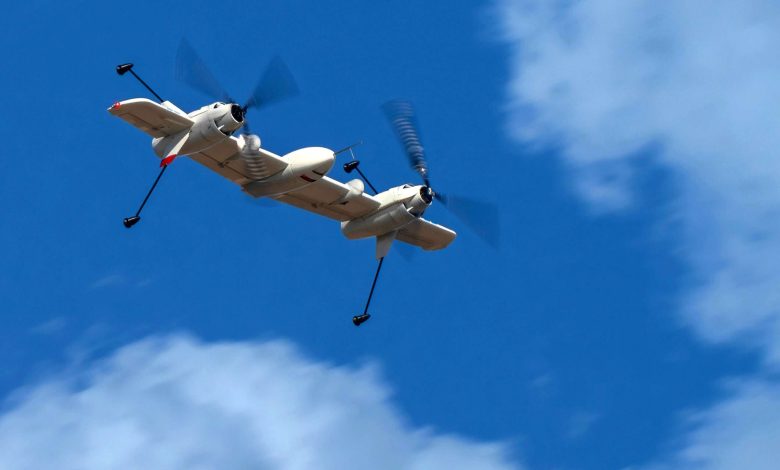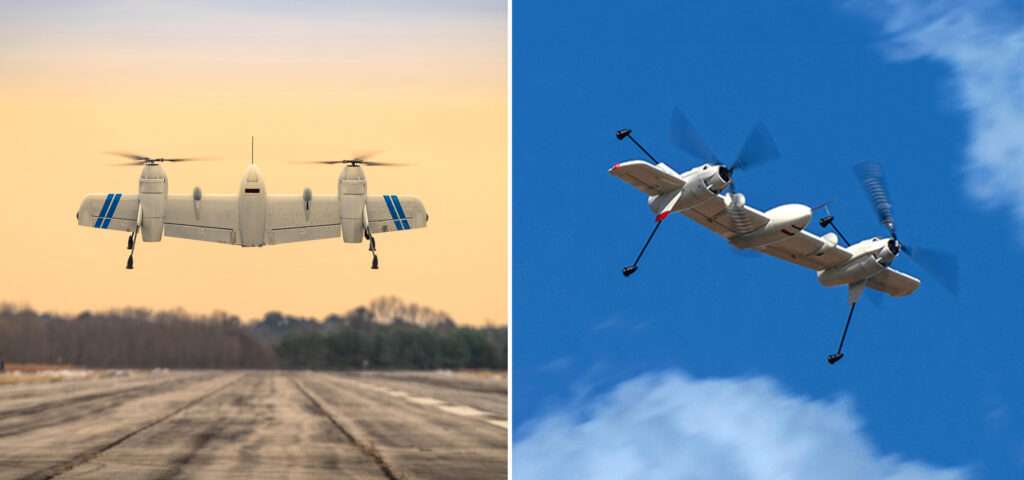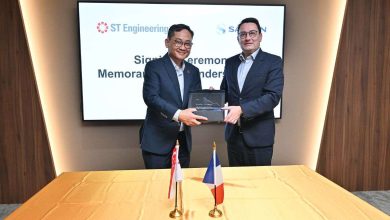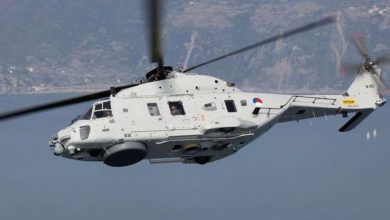
Soaring Innovations: The Groundbreaking Dual-Mode Rotor Blown Wing UAS by Sikorsky!
Sikorsky, a division of Lockheed Martin (NYSE: LMT), has adeptly validated the advanced control algorithms necessary to manage a ‘rotor blown wing’ unmanned aerial vehicle (UAV) in both rotorcraft and fixed-wing formats. Powered by batteries, the 115-pound (52kg) twin prop-rotor prototype has exhibited operational stability and nimbleness across diverse flight environments, along with the potential to scale this unique vertical take-off and landing (VTOL) framework for larger models requiring hybrid-electric propulsion.
“Blending helicopter and airplane flight characteristics into a flying wing exemplifies Sikorsky’s dedication to leading the charge in next-generation VTOL UAV technology that can function at higher speeds and longer ranges compared to traditional helicopters,” remarked Sikorsky Vice President and General Manager Rich Benton. “Our rotor blown wing platform stands as a prime illustration of how we leverage our extensive 102-year aviation heritage to create inventive designs that meet the evolving demands of commercial and military users.”
Groundbreaking Achievements
Sikorsky Innovations, the company’s swift prototyping division, leads efforts to enhance and evolve the rotor blown wing structure. Within a single year, Sikorsky Innovations has progressed through preliminary design, simulation, and both tethered and free flights to gather aerodynamic data, flight control parameters, and quality assessments.
Significant advancements were accomplished in January 2025 when the 10.3-ft composite wingspan aircraft witnessed more than 40 successful take-offs and landings. Impressively, the aircraft executed 30 transitions between rotorcraft and airplane configurations, representing the most intricate maneuver required by the design. In horizontal flight mode, the aircraft reached a top cruise speed of 86 knots. Simultaneous wind tunnel evaluations were conducted on a 1:1 scale model, delivering crucial confirmation of the newly formulated control laws by correlating them with empirical experiment results.

“Our rotor blown wing has demonstrated the control authority and unique handling traits critical for transitioning smoothly and reliably from hovering to high-speed wing-borne cruising, and back,” highlighted Sikorsky Innovations Director Igor Cherepinsky. “Innovative control algorithms were vital for this transition maneuver to operate fluidly and effectively. The data indicates we can operate from pitching ship decks and unprepared terrains when scaled to significantly larger formats.”
Future uses of UAS rotor blown wing aircraft include search and rescue missions, firefighting surveillance, humanitarian response, and pipeline inspections. Larger versions will enable extensive intelligence, surveillance, and reconnaissance operations, along with piloted drone teaming (manned/unmanned collaboration) missions.
All rotor blown wing variants will integrate Sikorsky’s MATRIX™ flight autonomy system to guide the aircraft throughout its flight operations.
System Family Overview
The rotor blown wing concept is part of a broader array of systems currently in development by Sikorsky. This family will also include winged VTOL UAVs and single main rotor vehicles.
Moreover, Sikorsky is developing a 1.2 megawatt hybrid-electric demonstrator (HEX) engineered with a tiltable wing and fuselage to transport passengers or cargo over long distances. A HEX power system testing platform is anticipated to showcase hovering capabilities by 2027.







